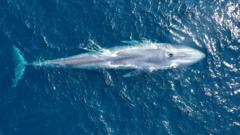Researchers have made a groundbreaking discovery that microplastics are present in the exhalations of bottlenose dolphins. This revelation, published in the journal PLOS One, underscores the pervasive nature of plastic pollution, which annually deposits nearly 2 million tons of debris into the world's oceans. Plastic particles, which break down into microplastics, have long been found in various environments, but this is the first instance of them being detected in the breath of marine mammals. These findings indicate that inhalation could be a significant exposure pathway for dolphins and similar marine creatures, exposing them to potential health threats such as inflammation and cellular damage.
Led by Leslie B. Hart of the College of Charleston, the study emphasizes the omnipresence of plastic pollution, reinforcing the notion that no safe haven remains free from this contaminant. Other studies have shown microplastics in birds' lungs and have estimated that humans consume or inhale vast quantities of these particles annually. Dolphins, residing in populated coastal regions worldwide, serve as vital indicators of pollution levels, offering insights into environmental health and the rising threat of plastics in air and water systems.
Led by Leslie B. Hart of the College of Charleston, the study emphasizes the omnipresence of plastic pollution, reinforcing the notion that no safe haven remains free from this contaminant. Other studies have shown microplastics in birds' lungs and have estimated that humans consume or inhale vast quantities of these particles annually. Dolphins, residing in populated coastal regions worldwide, serve as vital indicators of pollution levels, offering insights into environmental health and the rising threat of plastics in air and water systems.


















